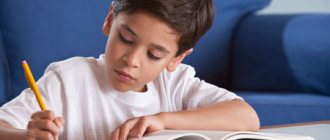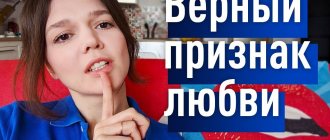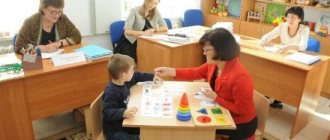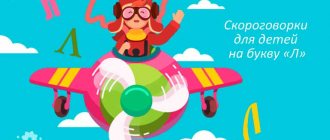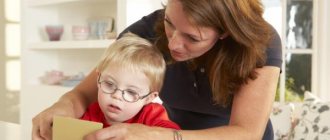Definition
Onomatopoeia in Russian is:
1. Reproduction of various sounds of the surrounding reality.
If, for example, you visited a dolphinarium, and the performance you saw delighted you, then you won’t be able to talk about it in a boring and dry way. You will try to convey the atmosphere of this action using onomatopoeia: the cry of dolphins, the splash of water, the sound of music.
Example:
- door creaking;
- bird cry;
- the sound of a musical instrument.
2. Creating words that sound similar to such sounds.
When talking to a child, you cannot do without onomatopoeic words - they simply will not understand you! A little person learns about the world by comparing a phenomenon or living creature with the word that denotes it.
Example:
- the cat meows - meow-meow;
- it's raining - drip-drip;
- the man laughs - ha ha.
Imitating a specific voice with musical sounds is also called onomatopoeia.
Books online
Valentina Ivanovna Miryasova Onomatopoeic exercises for the development of speech of preschoolers
Preface
Onomatopoeias are most often the first words in the speech of young children. They designate a cat with the sound combination “meow”, a dog with “av-av”, a cow with “muuu”, and a car with “bi-bi”.
It is believed that the first words that a person uttered when he began to speak were precisely imitations of objective and natural sounds: the chirping of birds, animals, the whistle of the wind, the rumble of thunder, the rustling of trees, the roar of landslides.
Some words owe their birth to onomatopoeia. “For example, when the ancient Greeks wanted to depict foreign speech, they pronounced “bar-barbarian,” hence the well-known word “barbarian.”
Each language masters the sounds of the outside world in its own way, and the onomatopoeias of different peoples do not always coincide with each other. For example, a Russian rooster crows “ku-ka-re-ku,” a Georgian rooster crows “gli-ko-ko,” and a French rooster crows “co-co-ri-co.” A Japanese horse pronounces “iin-hiin” instead of “i-go-go,” and a frog croaks “gero-gero” instead of the usual “kwa-kwa.”
Thus, onomatopoeia (onomatopoeia, ideophone) is a word that serves to imitate the sounds of the surrounding reality using language. In the Russian language there is a large group of words that are produced by animals and birds: meow, chik-chirik, woof-woof, pi-pi-pi, oink-oink, muuu, beee. Other words convey non-speech sounds produced by a person: cough-cough, smack, ha-ha, as well as other natural and objective sounds: buk-buk, drip-drip, bang-bang, chpok.
The first words a child utters are also most often onomatopoeic in nature. They are well understood by children and emotionally rich. Onomatopoeic exercises with children under four years of age contribute to the development of speech hearing, auditory perception and attention, make it possible to improve the child’s sound pronunciation, and most importantly, they will bring great joy to adults and children in the process of joint communication.
* * *
A car was walking along the road and ran over a nail. SHSHSHH – the tire hisses angrily. It had to be replaced.
* * *
The rain is dripping - DRIP-DRIP from the bear's furry paws. Sometimes in the summer he likes to take rain showers.
* * *
Tanya coughs - KH-KH. She became very sick. Ate some snow in the yard. A small lump.
* * *
creaking, creaking, creaking - the door creaked, now it has calmed down. Dad got oil, lubricated the hinges, strengthened them.
* * *
SSSSS - a stern whistle sounded, He will find the offender. Always cross the road where the crossing is arranged!
* * *
The clock ticks TICK-TACK, the hands move to the beat. We start them again so that we know the time exactly.
* * *
Our puppy sneezed - APCHHI! I caught a cold somewhere. We will treat him with pills.
* * *
The water gurgles - BULL-BULL, lifting the lid. Two grannies were exhausted while waiting for tea.
* * *
We need to harvest the potatoes. We go to the fields to help. And Antoshka plays TRA-LA-LA on the accordion.
* * *
An ant made a violin from a leaf. TILI-LI - squeals merrily at her.
* * *
The ram taught the sheep to walk to the drum. He walks first himself, Drumming - THUMP-THUMP-THUMP!
* * *
SHSHH - the trees rustle, Whisper in the silence. And the forest kids sleep sweetly to the sound of whispers.
* * *
The drill is buzzing - zhu-zhu-zhu-zhu! It’s not in vain that I’m buzzing. I can screw in a screw, you just have to ask.
* * *
DING-DING-DING - The bell at the door called Mashenka again. But she will check through the peephole to see who pressed the button.
* * *
ZZZ - the mosquito is ringing, bothering the cat. The cat hisses at him and drives him away with her paw.
* * *
Vanechka is crying in diapers, He is screaming - UA-UA! A small child wants his mother to come over.
* * *
The black rook screams - CRACK-CRACK! I'm screaming for a reason. We need to take note, I found a coin again!
* * *
Thunder rumbles in the sky - BOM-BOM, peals are heard. Hide inside the house from the thunderstorm, guys!
* * *
Tolya plays the horn, LYULI-LYULI, AY-LYULI! And the cows go to the field, nibble grass from the ground.
* * *
BEE-BEE - the car beeps, It's just a step to the cockerel. It would be better if the careless cockerel walked near the house.
* * *
The baby elephant trumpets TU-RU-RU - I won’t drink water. Better yet, I’ll put it in my trunk and release it in a fountain.
* * *
The trumpet blows - TU-RU-RU-RU! I’ll gather everyone to the lineup! TU-RU-RU-RU! It's time to get up, enough for you guys, sleep!
* * *
The cat meows, the baby is rocked. The cradle rocks, MEOW hums.
* * *
The cat is walking in the yard. The mouse cleans the bowl, picking up crumbs in its paws, pee - squeaks - the leftovers are sweet!
* * *
The titmouse is shading - SHADOW-SHADOW-SHADOW. There is no lard in the feeder, a very sad day.
* * *
GRU-GRU-GRU - pigeons were cooing at the ice hole. They cooed and cooed, and then they began to swim.
* * *
The bee is buzzing - ZH-HU-HU-HU-HU, I don’t know if I’m tired. I work from morning to evening, I carry honey to the hive.
* * *
KWA-KWA-KWA-KWA-KWA - The frogs are croaking. They live well in a ditch at the edge of the forest.
* * *
The alarm clock on the table is ringing, preventing Tanyusha from sleeping. The sound is piercing and strong DING-DING-DING - Ringing again.
* * *
The dog barks - AV-AV-AV, Take the chain off me and let me run for an hour with a friend.
* * *
Eeyore - the donkey brays. Master, I'm angry with you. It’s unfair to burden me like this, But I’m stubborn, I won’t budge.
* * *
The crow caws - KAR, KAR, Please don’t forget: Matches can cause a fire, Don’t throw them.
* * *
The stream is babbling DING-DING, running down the hill. He picked up the boat, Egorka couldn’t catch up.
* * *
CHEEK-CHEEK - Sparrow tweets in winter. You won't find a single midge under the snow.
* * *
The bunny has a balalaika, he walks with it all day long and strums on the balalaika: TRENDY-BRUN Yes TRENDY-BRUN.
* * *
By the ram Byasha all the lambs are dancing. He plays the harmonica, touches the buttons: BEE-BEE-BEE-BEE-BEE...
* * *
D-D-D – the Machine Gun scribbles skillfully in battle. He boldly defends the border from enemies.
* * *
The hammer KNOCK-KNOCK-KNOCK, the nail hammers in. Our Alyosha is great, he helps Dad.
* * *
We are standing on the shore, the steamboat is humming: UUUUUUUUUUUUUUUUUUUUUUUUUUUUU! Running through the waves, He gives us a whistle.
* * *
LLLLLLL - a rumble was heard in the sky, the plane waved its wing. He hummed, he hummed and flew away behind the cloud.
* * *
The bell rang on the goat's neck. DING-DING, and everyone around became more cheerful.
* * *
The locomotive puffs - CHOOH-CHOOH to the driver Misha. We're going too fast, we need to drive more quietly.
* * *
SSSSSS - water flows from the tap, they forgot to turn on the tap. Oh, the water is leaking from the bathroom, the cat may drown.
* * *
A wolf howls in the forest - UUUUUUUU! He wants to eat. I'm tired of listening to the wolf, I need to give him something to eat.
* * *
The hedgehog snorts - FIR-FIR, Sees cheese in the mousetrap. The mousetrap is so dangerous, the mouse runs to it in vain.
* * *
The bear walks through the forest, Now he growls, now he roars: RRRRR! Give me some candy! Every bee has honey, but the bear does not.
* * *
The fox yaps: YAH-YAH! Where did the boa constrictor come from here? The boa constrictor answered the question: “I crawled from the zoo.”
* * *
The horse neighs - I-GO-GO! What's happened? - NOTHING! The oats just ran out and the owner didn’t bring them.
* * *
The sheep bleats - BE-BE-BE! I’ll curl a ring for myself, Then I’ll go outside, Let everyone admire me!
* * *
MUUUU - the cow moos with soft lips. And the calf is silent, He clings to his mother.
* * *
The goat calls - ME-ME! I'll sharpen my horns, I'll go for a walk in the forest, boldly along the path.
* * *
The pig grunts - ONG-OINT - To the fat son: - Wipe Piglet after eating with a handkerchief!
* * *
The dog barks: AV-AV-AV! I will guard your house. And I can’t leave my post now. I just can’t.
* * *
Two cuckoos cuckooed, sitting on a branch: “We are girlfriends, we are talkers KU-KU-KU-KU...
* * *
Time Petya will sing to us, Looking at the sun. He always crows, not sparing his throat: - KU-KA-RE-KU!
* * *
BL-BL-BL - a turkey babbles to another turkey: - You forgot, but I’ll find where the path to the house is.
* * *
The goose put on bright red satin shoes. And he cackles: “HA-HA-HA, I’ll go to the meadows in them.”
* * *
CHIR-CHIR-CHIR - magpies chatter loudly from the very morning: - We learned to chirp at karaoke yesterday.
* * *
The crow caws - CAR-CAR! I had such a nightmare that the cunning fox suddenly turned into a bird.
* * *
- GA-GA-GA! - the geese cackle. I'm not afraid of them anymore. I’ll give the geese a wide berth, and then I’ll take off!
Table of contents
- Preface
- Advertising on the website
Kinds
Onomatopoeia is an important way for children to understand the world around them. Onomatopoeic words in Russian imitate:
- the cry of birds (crows: kar-kar, chickens: ko-ko-ko);
- animal voices (dogs: woof-woof, horses: yoke-go);
- the sound of musical instruments (balalaika: tren-dren, bell: dili-don);
- sounds of natural phenomena (rain: drip-drip, thunder: bang-bang);
- sounds made by people (coughing: cough-cough, walking: stomp-stomp).
All the variety of sounds that surround us can be represented in onomatopoeic words. And they will be clear to everyone without additional explanation!
Features of onomatopoeia in Russian
Onomatopoeic words are characterized by:
- repetitions (bom-bom, ko-ko-ko), onomatopoeic words enhance the emotional impact;
- use as a separate noun (The loud tick-tock hurt the ears.);
- transformation into other parts of speech (laughter, laugh, laughing).
Thus, onomatopoeia conveys the atmosphere and creates an image. Let's try to talk about watches in different ways:
- The clock hung on the wall. Showed the exact time.
- The clock ticked rhythmically, a sunbeam played on the wall.
Which one do you prefer? To create an image and mood, onomatopoeic words are necessary.
The difference between onomatopoeic words and interjections
Separately, it should be noted the difference between onomatopoeic words and interjections. Despite the external similarity, these are not the same thing: the first transmit sound, the second convey emotions.
Examples of interjections:
- The meaningful “Shh” is, without a doubt, a request to remain silent.
- “Wow, great!” - joy and delight are obvious.
- “Cool!”, “Blah blah blah” are fashionable forms of interjections in modern slang, saying “good, great,” or about something understandable or empty.
A separate group includes words that are both interjections and onomatopoeias. For example, “Gee-gee-gee” expresses laughter with its sound and at the same time conveys a feeling of joy and fun.
Functions
The main role of onomatopoeic words is to repeat the sound.
For example, if we want to reproduce the sound of a flying mosquito, it will be “zzz”. And the ticking of a clock looks like “tick-tock.”
In addition, onomatopoeia is a way of creating an expressive effect. For example, compare:
- The dog is small. The puppy frolicked and yelped funny “yelp-yelp” at the flying butterflies.
- The dog is big. A huge dog sat at the gate and barked importantly “woof-woof” if someone passed by.
- The dog is angry. The dog bristled and growled “rrrr”, the cat was not afraid, but backed away.
- The dog is whining. Somewhere a dog whined pitifully “oooh”, bringing melancholy.
Here, onomatopoeic words convey shades and intonations of essentially one action. Agree, in each case a completely different animal with a certain set of emotions appears in the imagination.
Onomatopoeia in literature. Examples:
Let’s take the poem “The Sea” by V. Khlebnikov (a famous futurist who is fond of word creation):
The waves are jumping lata-tah! The waves are jumping a-tsa-tsa!
“Lata-tah” and “a-tsa-tsa” are, according to the author, the very sounds with which the waves “jump”. To a person in everyday conversation, using such onomatopoeia would seem strange and inconvenient, because he would simply not be understood. The language of poetry is another matter, because when it comes to literature, the concept of sound-likeness also comes into play. It is closely related to onomatopoeia, but is not at all identical to it. Let's look at this term as well.
Application
Sound imitation is widely used in many areas of human life.
In pedagogy
Imitation is one of the methods of producing sounds for poorly speaking children.
During classes with a speech therapist, such a child is asked to caw like a crow (carrr) or hiss like a snake (shhh). And also take part in games with the sound of certain actions: plop-plop (a pig is swimming in a puddle), boo-boo (a bear fell from a tree).
Imitating animal and nature sounds is especially helpful for babies. This way, they learn with pleasure and begin to speak faster.
In fiction
In literary works, the effect of sound presence is achieved with the help of onomatopoeia. Using words with hissing sounds, you can reproduce noise or rustling. Example: The whisper of rain was heard in the rustling leaves of the trees.
Also, onomatopoeic words can convey the emotional background of the scene being described, express the state of the hero and characters, and the sensations of the actions taking place.
The musicians came running, the drums started beating, Bom! Bom! Bom! Bom! A fly dances with a mosquito. And behind her is a bug, a bug, boots, stomp, stomp.
K. Chukovsky
Onomatopoeia gives a feeling of celebration, dancing, fun! Isn't it incendiary?
In folklore
Folk songs, poems, and nursery rhymes, which children love very much, are replete with onomatopoeic words.
Example: Bang bang! Oh oh oh! My little bunny is running away.
And here's another:
And the owls from the forest With their eyes: clap-clap! And the goat from the stable Nogami: stomp, stomp!
Onomatopoeia helps with figurative perception and is why children like it so much.
In colloquial vocabulary
In everyday speech, onomatopoeic words enhance the conveyed emotions and give expression to the conversation:
- I'm tired of your chatter!
- I called, but no response.
In advertising
Sound imitation expands perception, catches attention, attracting a potential buyer. And, most importantly, it is very well remembered: Bouillon cubes - glug-glug.
How to help a child?
Below are tips and advice for parents about the type of material children typically learn in school, as well as some ideas on how to help your child if they are struggling.
Keep it casual
Remember that the purpose of phonics is to help your child learn to read as quickly as possible so that he can read whatever he likes fluently! No one wants reading to become a chore, so learning should be playful, interesting and engaging.
Whatever stage of learning your child is at, do not forget:
- Phonics lessons should be short and focused. Try to stop before your child gets bored with homework! As a rule, this should be no more than 10 minutes.
- Make the learning process as fun as possible for the child, in a playful way.
- Choose a time to study when your child is not tired, and find a quiet place where he will not be distracted by the TV or noisy siblings.
- Even when your child has already learned to read on his own, continue to read books aloud to him! During this period, fairy tales and short stories, high-quality popular science literature, as well as pleasant, quiet time discussing what you have read are important!
- If you are concerned about your child’s poor progress, go to https://zvukibukvy.ru/, where a phonetic analysis of words is presented in all its diversity, or talk to the teacher. Share your concerns and ask for advice. This often helps and can be a great source of new ideas for supporting your child!

